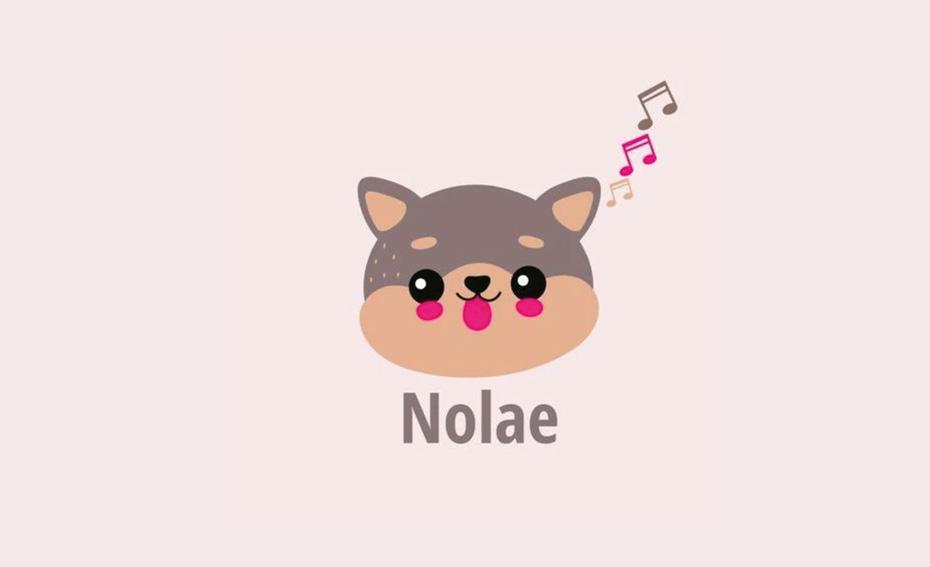The K-Pop ABC for newcomers and professionals
Das K-Pop ABC für Neulinge und Profis
Autor: Helen Bosch / Jul 22, 2021


K-Pop Blog > Overview > K-Pop ABC
K-Pop hat seine eigene Sprache - hier ein kleiner Überblick der wichtigsten Begriffe inklusive Erklärung, damit Du immer den Durchblick hast und mitreden kannst :)
A
Aegyo - Der Begriff bezeichnet im Koreanischen ein übertrieben niedliches Verhalten. So sprechen K-pop Idols zum Beispiel in Babystimme oder formen Herzen mit den Fingern, wenn sie zu „Aegyo“ aufgefordert werden.
Akgae - Ein Mitglied einer Band, welches im Vergleich zu den anderen Band Mitgliedern auffällig viel Aufmerksamkeit erhält.
All-Kill - Wenn der Song oder das Album einer Band in allen südkoreanischen Musikcharts den ersten Platz erreicht, nennt man das einen „All-Kill“.
Anti - Ein Anti-Fan und Hater (Hasser), der sich regelmäßig negativ über einen Künstler äußert, sei es in den Kommentaren zu den offiziellen Inhalten des Künstlers oder in Diskussionen mit Fans.
B
Bias - Dein persönlicher absoluter Liebling einer Band. Jeder Fan hat seinen eigenen Bias.
Bias Wrecker - Das Bandmitglied, dass nach dem Bias die meiste Aufmerksamkeit auf sich zieht und manchmal sogar vom Bias ablenkt.
Big Three - Damit sind die großen 3 Entertainments gemeint, die seit der Entstehung des K-Pop bis Heute die K-Pop Branche dominieren: SM Entertainment, JYP Entertainment & YG Entertainment. Es gibt Diskussionen, ob es mit HYBE inzwischen die “Big Four” sind oder dass HYBE YG als Mitglied der Big Three ersetzt hat. Trotzdem denkt die große Mehrheit auch heute bei dem Begriff “Big Three” an SM, JYP und YG.
Black Ocean - Bei K-pop Konzerten oder Music Shows schwenken die Fans oft den Lightstick ihrer Lieblingsband. Wenn die ganze Arena zum Beispiel mit roten Lightsticks gefüllt ist, nennt man das einen „Red Ocean“. Ein „Black Ocean“ entsteht, wenn „Fans“ sich absprechen und alle ihre Lightsticks ausmachen um eine bestimmte Band und ihre Performance zu boykottieren. In dem Fall wird die Arena oder ein Teil davon dunkel und still.
B-Side - Ein Song, der nicht der Titelsong eines Albums ist. Wenn ein Album 5 Songs enthält, gibt es also 4 B-Sides. Ausnahmen sind Fälle, in denen mehrere Songs als Titelsong beworben werden.
Oft ist der Titelsong der einzige mit einem Musikvideo und derjenige, der in Music Shows aufgeführt wird. Manchmal erhält aber auch eine B-Side ein Musikvideo, zum Beispiel wenn sie genauso beliebt ist oder sogar noch beliebter als der Titelsong. In der Regel wird auf Tracklist Postern angegeben, welcher Song der “Title” ist. Alle anderen Songs in dem Album sind automatisch “B-Sides”.
C
Center - Das Mitglied der Band, das während des Auftritts die meiste Zeit in der Mitte tanzt und somit die meiste Screentime erhält. Der Center ist keine feste Position und wechselt oft, wenn auch nicht immer während eines Comebacks.
CF - „CF“ ist die Abkürzung für „Commercial Film“ und bezeichnet in Korea Werbespots, die im Fernsehen laufen.
Comeback - Ein Comeback findet immer dann statt, wenn eine K-Pop-Band oder ein Einzelkünstler einen neuen Song veröffentlicht. Hierbei wird der jeweilige Song auf verschiedenen Musikshows promotet.
Concept - Das Thema von einem Album oder Fotoshooting wird als "Concept" (Konzept) bezeichnet. Die offiziellen Fotos von einem Album oder Fotobuch werden oft mit dem Titel “Concept Photo” oder “Concept Image” hochgeladen. Dieses Konzept zeigt sich nicht nur in den Fotos, sondern auch in der Musik und der Bühnengestaltung.
D
Dance Practice - K-Pop ist bekannt für die zu den Songs passenden Tanzchoreografien. Diese werden von Fans auch gerne nachgemacht, hierfür werden dann spezielle „Dance Practice“ Videos veröffentlicht.
Debut - Der offizielle Einstieg in die Unterhaltungsbranche. Das Debüt eines Sängers findet statt, wenn er sein erstes Album oder seinen ersten Song veröffentlicht.
In K-Pop kommt es manchmal vor, dass eine Gruppe einen Song oder ein ganzes Album präsentiert und trotzdem noch nicht offiziell debütiert ist. Ob eine Veröffentlichung als Debüt gilt oder nicht, legt in der K-Pop Branche nämlich das Entertainment fest.
Delulu - Der Begriff ist vom englischen Wort „Delusional“ abgeleitet, was „wahnhaft“ bedeutet. K-Pop Fans verwenden den Begriff oft in den sozialen Medien, um Menschen mit verrückten Fantasien oder Ideen zu beschreiben. Oft sind damit andere Fans gemeint, die idealistische Fantasien über ihre Lieblings Idole haben.
Disbandment - Wenn eine Gruppe sich auflöst, nennt man das “Disbandment” (Auflösung).
Discography/ Diskografie - Eine Diskografie ist eine detaillierte Auflistung von Tonträgern. Bei K-Pop-Künstlern wird in der Regel zwischen Studioalben, Extended Plays und Single-Alben differenziert, die sich hauptsächlich durch die Anzahl der enthaltenen Lieder unterscheiden.
E
Ending Fairy - Das Mitglied auf dessen Gesicht nach einer Musikshow gezoomt wird.
F
Fan Chant - Zu jedem Song gibt es einen offiziellen „Fan Chant“, ein Fan Gesang, um ihre Idole bei Konzerten und Musikshows zu unterstützen. Dieser wird entweder von den Fangemeinden oder sogar von der jeweiligen Band erstellt.
Fandom - Die Fangemeinde von einem Künstler. Fandoms haben in der K-Pop Branche oft nicht nur einen Namen, sondern auch eine eigene Farbe oder sogar ein eigenes Logo.
Fanservice - Wenn ein Idol oder Schauspieler etwas macht, um seine Fans zu erfreuen, nennt sich das Fanservice. Dazu gehört zum Beispiel, das Idols sich ihr T-Shirt ausziehen oder Bandkollegen sich umarmen, die Fans gerne in einer Bromance sehen würden.
Fighting - Ein Zuruf zur Unterstützung und Motivation.
G
Gaon Chart - Der Gaon Chart wurde 2010 initiiert und gibt eine Einsicht in die wöchentlich meistverkauften Lieder und Musikalben in Südkorea, welche in die Jahresendauswertung - in die Berechnungen der Awardshows - mit einfließen.
Generations - Generations sind die verschiedenen Zeiträume seit dem Entstehen des K-Pops.
H
Hallyu - Der Begriff steht für „Koreanische Welle“ und beschreibt wie K-Pop buchstäblich alles und jeden überrollt und zunehmend beliebter wird.
Hanteo Chart - Der Hanteo Chart ist im Gegensatz zu dem Gaon Chart ein „Real-time Chart“. Die Zählung erfolgt in Echtzeit und nicht kumuliert über einen bestimmten Zeitraum. Der Chart bezieht seine Daten aus Hanteo zertifizierten Läden, welche ihre tatsächlichen Verkäufe an den Endkunden melden. Diese Daten fließen ebenfalls in die Wertung der wöchentlichen Musikshows ein.
Hier erfährst Du noch mehr über die beiden Charts!
Hiatus - Der Begriff bezeichnet eine Pause oder Unterbrechung von Aktivitäten. Kündigt ein K-Pop Künstler einen Hiatus an, unterbricht er für eine längere Zeit seine Aktivitäten, zum Beispiel um sich von einer Krankheit zu erholen.
I
Idol - Mitglieder der K-Pop Bands. Sie sind für ihre Fans wirkliche Vorbilder.
Hier findest Du Alben von deinen Lieblings Idols. Und natürlich auch Merchandise!
J
J-Line - Wenn eine K-Pop Gruppe zwei oder mehr japanische Mitglieder hat, werden diese als J-Line bezeichnet. Die erste Gruppe mit einer J-Line war die Girlgroup Twice in 2015. Sie hat 6 koreanische Mitglieder und drei japanische: Sana, Mina und Momo.
Hat eine Gruppe mehrere chinesische Mitglieder, werden sie als “C-Line” bezeichnet. Dasselbe gilt für alle anderen Nationalitäten. Doch obwohl immer wieder Gruppen debütieren, die mehrere Mitglieder mit gemischten Hintergründen haben, entsteht selten eine “Line”, da nicht alle ausländischen (nicht-koreanischen) Mitglieder die gleiche Nationalität haben. “J-Line” ist bis heute der gebräuchlichste Begriff, denn japanische Idols gibt es in der K-Pop Branche relativ häufig.
K
Koreaboo - Eine meist abwertende Bezeichnung von nicht-koreanischen Personen, die besessen von der koreanischen Kultur sind. Viele sogenannte “Koreaboos” möchten mit Koreanern ausgehen, nach Korea ziehen oder selbst mehr wie ein Koreaner aussehen.
L
Leader - Der Leader ist meist das älteste Mitglied der Band und ist wie ein/e Vater/Mutter für die restlichen Mitglieder; das heißt er kümmert sich um die anderen, motiviert sie und repräsentiert die Band, indem er zum Beispiel bei Preisverleihungen das Reden übernimmt.
Light Stick - Ein beliebter Fanartikel, den heutzutage fast jeder K-Pop Künstler anbietet. Damit sind aufwändige, bunte Leuchtstäbe gemeint, die meist das Logo, den Namen oder ein anderes Symbol von dem jeweiligen Künstler zeigen und in verschiedenen Farben leuchten können. Fans schwenken sie auf Konzerten, um ihre Idols anzufeuern. Da jede Gruppe und jeder Künstler einen eigenen Lightstick hat, können die Stars ihre Fans damit überall wiedererkennen. Zum Beispiel bei Festivals, wo die Zuschauer aus vielen verschiedenen Fandoms kommen.
Line Distribution - Die Aufteilung der Song parts unter den Mitgliedern einer Band. In von Fans erstellten „Line distribution“ Videos wird oft verglichen, wer wie viele Songzeilen singt, wobei Main Vocals, also die Hauptsänger einer Gruppe, meist besonders große Parts haben. Leider wird im Vergleich oft auch deutlich, dass manche Mitglieder kontinuierlich extrem wenige Gesangsparts haben.
M
Maknae - Hierbei handelt es sich um das jüngste Mitglied einer Band. Dieser Begriff wird aber nicht nur innerhalb einer Band, sondern auch innerhalb einer Familie verwendet.
Multi Stan - Ein Fan, der viele verschiedene Gruppen und Künstler mag. „Multi“ leitet sich vom englischen Wort „multiple“ ab, das „mehrere, zahlreiche, vielfache“ bedeutet.
MV - Abkürzung für „Musik Video“.
N
Netizen - Netizen setzt sich aus „Citizen“ und „Internet“ zusammen und beschreibt Personen im Internet.
Nugu - Als “Nugu” werden Künstler bezeichnet, die eher unbekannt sind oder wenig Erfolg haben. “Nugu (누구)” ist ein koreanisches Wort, welches übersetzt “Wer” bedeutet. Nugu Künstler sind also ein Niemand; sie gelten als so unbekannt, dass man fragen muss “Wer ist das?”
Leider wird “Nugu” auch abwertend genutzt. Manche Fans verwenden den Begriff für alle Künstler, die sie als weniger erfolgreich als ihren persönlichen Favoriten erachten.
O
OST - Abkürzung für den Official Soundtrack koreanischer Fernsehserien.
P
Point Dance - Eine spezielle, außergewöhnliche Bewegung der Tanzroutine eines jeden Songs.
Pre-Debut - Als “Pre-Debut” wird die Phase “vor dem Debüt” bezeichnet. Es gibt zum Beispiel Pre-Debut Fotos, Pre-Debut Singles oder Pre-Debut Alben. Mit “Pre-Debut” ist also ganz einfach alles gemeint, was vor dem offiziellen Debüt von einem Künstler veröffentlicht wurde.
Pre-Release - Normalerweise werden neue Songs am selben Tag veröffentlicht wie das Album, zu dem sie gehören. Heutzutage ist es allerdings üblich, ein oder zwei Songs schon im Voraus hochzuladen. Diese Songs werden als “Pre-Release” bezeichnet, weil sie “vor der Veröffentlichung” erschienen sind. In den meisten Fällen werden Pre-Release Singles ein paar Tage vor dem Album veröffentlicht. Manchmal liegen aber sogar Monate dazwischen.
R
Rookies - Der Begriff „Rookies“ bezeichnet junge Künstler, die erst kürzlich debütiert haben. In dieser Phase bleiben junge Künstler ca. 1-2 Jahre.
S
Sasaeng - „Sasaeng“ beschreibt extreme Fans. Meistens wird der Begriff als negative Bezeichnung für Fans verwendet, die Personen des öffentlichen Lebens nachstellen oder auf andere Weise in ihre Privatsphäre eindringen.
Selca (Day) - „Selca“ ist die koreanische Bezeichnung für „Selfie“. Jede Band hat ihren eigenen sogenannten Selca Day mit zugehörigem Hashtag. Fans können dann an den jeweiligen Tagen ein Bild von sich selbst, kombiniert mit ihrem Idol inklusive dem passenden Hashtag, posten.
Hier erfährst Du noch mehr über die Selca Days!
Shelfie - Ein "Selfie" Deines Regals und Deiner K-Pop Sammlung.
SNS - Der Begriff ist angelehnt an das englische Wort "Social Network Service". Es steht für soziale Medien wie Facebook, Instagram, Twitter, Pinterest und so weiter.
Solo Stan - Ein Fan, der sich nur für ein einzelnes Mitglied einer Gruppe interessiert. Entweder mag er den Rest der Gruppe nicht oder er kennt nur das eine Mitglied - zum Beispiel durch Solo Projekte - und würde sich deshalb nicht als Fan von der ganzen Gruppe bezeichnen.
Stan - K-Pop Fans, die großes Interesse an einem Künstler haben, werden “Stan” genannt. Wenn du also BTS sehr gerne magst, bist du ein BTS-Stan. Wenn du Blackpink feierst, bist du ein Blackpink Stan. “Stan” kann auch als Verb in einem Satz benutzt werden: “Ich stanne Blackpink.”
Generell bezeichnet der Begriff einen sehr übereifrigen und besessenen Fan einer Berühmtheit. In der K-Pop Branche wird damit aber einfach nur ausgedrückt, dass man ein leidenschaftlicher Fan ist.
Sub-Unit - Wenn sich einzelne Mitglieder von einer Idolgruppe zu einer kleineren Gruppe zusammenschließen, wird das als Sub-Unit bezeichnet. Diese Sub-Units veröffentlichen eigene Alben und treten in der Konstellation auch in Music Shows oder auf Konzerten auf. Trotzdem sind die Mitglieder weiterhin in der großen Gruppe aktiv. Manche Gruppen haben mehrere Sub-Units. Ab und zu kommt es sogar vor, dass ein Mitglied in mehr als einer Sub-Unit aktiv ist.
In der Regel entstehen Sub-Units innerhalb einer Gruppe. Es gibt aber auch Fälle wie die Sub-Unit “Super Junior M”. Zu den Mitgliedern zählen die chinesischen Sänger Henry und Zhou Mi, die beide nicht zu Super Junior gehören. Sie waren beide nur in der Unit aktiv. Das ist allerdings extrem selten.
Survival Shows - Koreanische Casting-Shows, in denen einzelne Kandidaten oder Gruppen gegeneinander antreten und Stück für Stück eliminiert werden, bis ein oder mehrere Gewinner übrig bleiben.
Hier erfährst du mehr über Survival Shows!
T
Trainee - So werden die Jugendlichen genannt, die in Entertainments trainieren, in der Hoffnung, eines Tages zu debütieren. Sie üben Singen, Tanzen und Rappen und leben teilweise sogar in der Agentur. Manche Talente sind 10 Jahre lang ein Trainee, manche nur 1. Nicht jeder schafft es bis zum Debüt.
U
Ultimate Bias - Der absolute Lieblingssänger/ die absolute Lieblingssängerin, nicht nur innerhalb einer Band, sondern in K-pop insgesamt. Sozusagen der Liebling unter den Lieblingen. Logischerweise ist der Ultimate Bias zugleich der Bias aus der jeweiligen Band.
Unboxing - Im Internet finden sich zahllose „Unboxing-Videos“ von Fans und vermehrt auch von K-pop Shops, in denen Alben und weitere Fanartikel vor der Kamera ausgepackt werden, um den Inhalt zu zeigen. Unboxings helfen Fans sich zu entscheiden, ob sie ein Album kaufen möchten oder nicht.
Underrated - In Deutsch „unterschätzt“. Oft sprechen Fans von „underrated“ Bands; Gruppen die mehr Aufmerksamkeit verdient haben und deren Talent unterschätzt wird.
Unit/ Sub-Unit - Gerade größere Bands werden oft in „Units“ aufgeteilt, die auch eigene Songs veröffentlichen. Neben diesen kleineren Gruppen, die aus einer Band hervorgehen, gibt es aber auch Special Units oder Project Units, die aus Mitgliedern verschiedener Bands bestehen und meist nur für kurze Zeit existieren.
V
Visual - Der Visual ist das Mitglied, welches die Gruppe repräsentiert - das Gesicht der Band.
Vocal Line, Dance Line, Hyung Line (…) - Wenn man von der "Vocal Line" (im Deutschen “Gesangslinie) einer Gruppe spricht, sind die Hauptsänger gemeint. Die “Dance Line” meint folglich die Haupttänzer. Die Boygroup Seventeen hat bereits vor ihrem Debüt klar definiert, wer zur Vocal-, Dance- oder Rap Line gehört und ist in diesen Gruppierungen auch separat aktiv. Außerhalb dieser Unterteilung in die Positionen gibt es unter anderem auch die Bezeichnung “Hyung Line”. Damit sind die älteren Mitglieder der Band gemeint; bei BTS wären das RM, J-Hope, Suga und Jin. Im Gegensatz dazu bilden die jüngeren Mitglieder Jungkook, Jimin und V die “Maknae Line”.
W
WeVerse - WeVerse ist der offizielle Store von Big Hit, einer südkoreanischen Unterhaltungsagentur und Plattenlabel.
Kanntest Du alle Begriffe? Schreib uns gerne in die Kommentare, welchen Begriff wir noch in unser K-Pop ABC mit aufnehmen sollten :)
5% RABATT BEI NEWSLETTER ANMELDUNG
Die neuesten Produkte, Aktionen und News. Direkt in dein Postfach.











